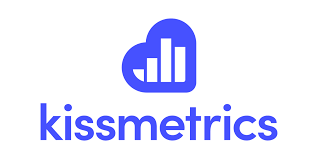In the vast ocean of digital marketing, steering your ship in the right direction requires more than just a good wind; it demands the best navigation tools at your disposal. Enter the world of marketing analytics tools, where Amplitude and Kissmetrics shine as beacons for marketers aiming to understand, analyze, and engage their audience effectively. But here’s the million-dollar question: which of these tools is the right fit for you?
| Amplitude | Kissmetrics |
|---|---|
 |  |
| G2 Score – 4.5 out of 5 stars | G2 Score – 4.1 out of 5 stars |
| TrustRadius Score – 8.3 out of 10 | TrustRadius Score – 9.6 out of 10 |
Understanding User Behavior: A Deep Dive
The Heart of Engagement: Amplitude’s Approach
At the core of any marketing strategy lies the need to understand how users interact with your product or website. Amplitude steps up to the plate with its robust analytics platform designed to give you a 360-degree view of user behavior. Imagine having a crystal ball that not only tells you what users are doing on your site but also why they’re doing it. That’s Amplitude for you.
Amplitude’s real strength lies in its event-based data model. This approach allows you to track every single interaction a user has with your product, from the moment they land on your page to the in-depth actions they take. Whether it’s clicking a button, completing a purchase, or dropping off at a specific stage, Amplitude captures these events in real-time, providing a rich dataset to analyze user journeys.
But Amplitude doesn’t stop at data collection. It transforms this data into insights through its user-friendly interface, where you can create custom dashboards, funnel analyses, and cohort studies without needing a data science degree. It’s like having a conversation with your data, asking questions, and getting actionable answers that drive your marketing strategy forward.
Kissmetrics’ Unique Selling Proposition: The Individual Focus
While Amplitude offers a broad view of user behavior, Kissmetrics hones in on the individual level, making it its unique selling proposition. Kissmetrics excels at providing detailed insights into each visitor’s journey through your site or product. This tool is all about understanding the “who” behind the actions, offering a microscope to examine the paths individual users take.
Kissmetrics’ approach is particularly beneficial for businesses focused on conversion optimization and customer retention. By tracking the behavior of individual users over time, it allows you to pinpoint exactly where users are dropping off or what features are driving engagement. This granular level of insight is invaluable for creating targeted marketing campaigns, personalizing user experiences, and ultimately, boosting your bottom line.
The platform’s ability to segment users based on their behavior and demographic data adds another layer of precision to your analysis. Want to know how users from a specific country interact with your new feature? Or how many times a user visited your site before making a purchase? Kissmetrics makes this level of detail accessible, enabling you to tailor your strategies to specific segments of your audience.
So, Which Is Right for You?
Deciding between Amplitude and Kissmetrics boils down to your specific needs and goals. If your focus is on understanding the overarching trends in user behavior and leveraging data to inform broad-scale strategies, Amplitude’s comprehensive event-based analytics might be your best bet. Its ability to dissect user journeys and provide a holistic view of engagement can inform strategic decisions across your product and marketing teams.
On the other hand, if your strategy hinges on deep dives into individual user behaviors, personalized marketing efforts, and precise segmentation, Kissmetrics’ detailed user-level tracking could be the game-changer you need. Its focus on individual user journeys makes it a powerful tool for businesses aiming to enhance user experiences and drive conversions through targeted actions.
In essence, both Amplitude and Kissmetrics offer powerful insights into user behavior, but from different vantage points. Your choice should align with your business objectives, the level of granularity you need in your data, and how you plan to action on these insights.
Integration Capabilities: Seamlessly Connecting Your Tech Stack
Amplitude’s Integration Ecosystem
In today’s digital landscape, your marketing analytics tool shouldn’t be an island but a hub that seamlessly connects with the rest of your tech stack. Amplitude shines brightly in this domain, boasting an extensive library of integrations that cater to a wide array of needs and platforms.
Imagine Amplitude as the central nervous system of your marketing efforts, capable of connecting with CRMs like Salesforce, email marketing platforms such as Mailchimp, and even A/B testing tools like Optimizely. This means you can track the impact of your email campaigns, understand how changes to your product affect user behavior, and see the results of your A/B tests all within the Amplitude dashboard.
But it’s not just about the variety of integrations; it’s also about the depth. Amplitude’s integrations are designed to be deep and meaningful, allowing for a two-way flow of data. This enables you to not only import data from other tools into Amplitude for analysis but also to export insights from Amplitude to other platforms to automate and tailor your marketing efforts. The result is a cohesive, data-driven strategy that leverages the best of what each tool in your arsenal has to offer.
Kissmetrics’ Approach to Integration
Kissmetrics, while offering a narrower range of integrations compared to Amplitude, focuses on providing highly impactful connections with key platforms. It might not have the sheer volume of Amplitude, but it makes each integration count, ensuring that you can connect with essential services like Shopify for eCommerce, HubSpot for inbound marketing, and Zapier for automating workflows across your tools.
Kissmetrics’ integrations are particularly beneficial for businesses that rely heavily on specific platforms. For instance, eCommerce businesses can benefit immensely from the deep integration with Shopify, allowing them to track customer behavior from first click to final purchase and beyond. This level of integration helps businesses create highly personalized marketing campaigns, improve customer retention, and ultimately, drive sales.
Moreover, Kissmetrics’ integration with Zapier opens up the possibility to connect with hundreds of other apps, even if direct integrations are not available. This means you can set up custom workflows that trigger actions in other tools based on the insights gathered from Kissmetrics, ensuring that your marketing efforts are as targeted and effective as possible.
Making the Right Choice for Your Business
When it comes to integration capabilities, the choice between Amplitude and Kissmetrics hinges on the breadth versus depth of integrations that align with your business needs. If your marketing strategy involves a diverse set of tools and platforms, and you’re looking for a solution that can act as a central hub for all your data, Amplitude’s extensive integration ecosystem might be the way to go.
On the other hand, if your strategy is more focused, relying heavily on specific platforms like Shopify or HubSpot, the targeted, deep integrations offered by Kissmetrics could provide more value, allowing you to leverage detailed insights for highly personalized marketing efforts.
Ultimately, the best marketing analytics tool for you will depend on how it fits within your existing tech stack and complements your overall marketing strategy. Both Amplitude and Kissmetrics offer powerful capabilities, but their true value is realized when they work hand-in-hand with the other tools in your arsenal.
Pricing and Scalability: Tailoring to Your Budget and Growth
| Amplitude | Amplitude offers several plans, including a Free plan, a Growth plan starting at $995 per month, and an Enterprise plan with custom pricing. |
| Kissmetrics | As of the latest information, Kissmetrics appears to have been absorbed by Neil Patel Digital, and specific pricing for Kissmetrics services is not listed. It’s advisable to contact them directly for details. |
Navigating Amplitude’s Pricing Structure
In the world of marketing analytics, finding a tool that fits your budget without compromising on features is a delicate balancing act. Amplitude understands this challenge and addresses it with a flexible pricing model designed to scale with your business. It starts with a freemium plan, offering core analytics functionalities that are perfect for startups and small businesses looking to get a foothold in understanding user behavior without any upfront investment.
As your business grows and your needs become more sophisticated, Amplitude’s pricing scales with you. The platform offers various paid tiers, which unlock additional features such as advanced segmentation, more comprehensive data history, and increased data management capabilities. These tiers are structured to cater to businesses of all sizes, from growing startups to large enterprises, ensuring that you only pay for the level of service and features you need.
One of the standout aspects of Amplitude’s pricing is its transparency. The company provides clear information about what each tier includes and the associated costs, making it easier for businesses to plan their budgets and investments in analytics. However, for custom enterprise solutions, you’d need to get in touch with their sales team for a tailored quote, which is a common practice in the SaaS industry for large-scale deployments.
Kissmetrics’ Approach to Pricing and Scalability
Kissmetrics takes a slightly different approach to pricing, focusing on providing tailored plans that meet the specific needs of businesses with a strong emphasis on conversion and customer engagement. Unlike Amplitude, Kissmetrics does not offer a freemium plan, which means businesses need to commit to a paid plan from the outset. However, this investment is met with a suite of powerful analytics tools designed to maximize ROI from the get-go.
Kissmetrics’ pricing structure is based on key metrics such as the number of events tracked and the level of support required. This model ensures that businesses only pay for the capacity they use, making it a cost-effective solution for small to medium-sized businesses with specific analytics needs. For larger enterprises or businesses with more complex requirements, Kissmetrics offers custom plans that provide a higher level of service, including dedicated support and more advanced analytics features.
One advantage of Kissmetrics’ pricing model is its focus on providing value through conversion optimization and customer engagement insights. For businesses that prioritize these areas, the investment in Kissmetrics can lead to significant improvements in customer lifetime value and overall business growth.
Deciding on the Best Fit for Your Budget and Growth
When it comes to choosing between Amplitude and Kissmetrics based on pricing and scalability, the decision largely depends on your business’s current stage and future growth plans. If you’re a startup or small business looking to dip your toes into user behavior analytics without a significant upfront investment, Amplitude’s freemium plan offers a compelling starting point.
On the other hand, if you’re ready to invest in a tool that can provide deep insights into conversion and customer engagement from day one, and your business model aligns with the pricing structure of events tracking, Kissmetrics presents a valuable option.
For growing businesses and enterprises, both platforms offer scalable solutions, but the choice comes down to the specific features and integrations you need and how they align with your overall marketing strategy. Amplitude’s broad integration ecosystem and scalable data analytics capabilities make it well-suited for businesses looking to expand their analytics capabilities in tandem with their growth. Meanwhile, Kissmetrics’ focus on conversion and customer engagement can provide targeted insights for businesses aiming to optimize these specific areas.
In conclusion, both Amplitude and Kissmetrics offer robust analytics solutions tailored to different business needs and growth stages. Understanding your business’s specific requirements, budget constraints, and growth aspirations is key to choosing the right tool that not only fits your current needs but also scales with your future ambitions.

Related: Check out our free SEO suite

User Interface and Ease of Use: Navigating the Analytics Landscape
Simplifying Complexity: Amplitude’s User Experience
In the intricate world of data analytics, the usability of a platform can be the difference between insights gained and opportunities missed. Amplitude has invested heavily in creating a user interface that is not only visually appealing but also highly intuitive. This commitment to usability makes complex data analyses accessible to users of all skill levels, from data scientists to marketing professionals.
One of the key strengths of Amplitude’s interface is its dashboard customization capabilities. Users can drag and drop different components to create a tailored analytics view that meets their specific needs. This flexibility ensures that critical data points are front and center, enabling quick decision-making. Additionally, Amplitude’s real-time analytics provide immediate insights into user behavior, allowing teams to react swiftly to emerging trends or issues.
Amplitude also emphasizes collaboration within teams. Features like shared dashboards and annotation tools make it easy for teams to work together on data analysis, regardless of their physical location. This collaborative aspect is crucial for aligning marketing strategies and ensuring that decisions are based on a unified understanding of the data.
Kissmetrics’ Focus on Clarity and Precision
Kissmetrics, on the other hand, approaches user interface design with a focus on clarity and precision. The platform is designed to make detailed user-level data comprehensible and actionable. Kissmetrics excels in presenting complex customer journey data in a way that is easy to understand, enabling marketers to draw precise insights without getting lost in the weeds.
The platform’s reporting features are particularly noteworthy. Kissmetrics provides a range of pre-built reports that cover various aspects of user behavior and engagement. These reports are designed to answer common marketing questions, from measuring the effectiveness of a campaign to understanding the factors contributing to churn. The ability to customize and build upon these reports allows users to delve deeper into their specific areas of interest.
Kissmetrics also places a strong emphasis on actionable insights. The platform’s interface is geared towards identifying opportunities for optimization and growth, making it easier for marketers to translate data into concrete actions. This focus on actionability is complemented by the platform’s visualization tools, which help users quickly grasp the impact of their marketing efforts.
Making the Right Choice for Your Team
The decision between Amplitude and Kissmetrics on the basis of user interface and ease of use ultimately depends on your team’s specific needs and preferences. If your priority is a platform that offers flexibility and real-time insights in an intuitive, collaborative environment, Amplitude could be the more suitable option. Its user-friendly design and customization capabilities make it accessible for a wide range of users, from data analysts to product managers.
Conversely, if your focus is on obtaining clear, precise insights into customer behavior and you value the ability to quickly understand and act on data, Kissmetrics may be the better fit. Its emphasis on clarity, precision, and actionable insights makes it a powerful tool for marketers looking to optimize their strategies based on detailed user data.
Both platforms offer strengths in terms of user interface and ease of use, but the best choice for your organization will depend on the balance you wish to strike between comprehensive data analysis capabilities and straightforward, actionable insights.
Data Analysis and Reporting Capabilities: Uncovering Actionable Insights
Diving Deep with Amplitude’s Analytical Power
In the quest to understand user behavior and optimize marketing strategies, the depth and flexibility of a tool’s data analysis and reporting capabilities are paramount. Amplitude stands out for its robust analytical engine, designed to handle complex data sets and uncover nuanced insights into user behavior.
Amplitude’s platform is built around the concept of behavioral analytics, with a strong emphasis on user journeys and segmentation. This allows marketers and product teams to track how users interact with their product or website over time, identify patterns, and segment users based on their actions. This level of detail is invaluable for creating personalized marketing strategies and improving user engagement.
Moreover, Amplitude provides advanced features like cohort analysis and retention tracking, which are essential for understanding how different groups of users engage with your product and for how long. These insights can help businesses identify what keeps users coming back and pinpoint areas where the user experience may be falling short.
The platform’s reporting tools are equally impressive, offering both pre-built and customizable reports. This flexibility ensures that businesses can create reports that align with their specific goals and KPIs. Amplitude also offers the ability to export data, allowing for further analysis in other tools if needed.
Kissmetrics’ Precision in Customer Insight
Kissmetrics, with its focus on conversion and customer engagement, provides a different but equally powerful set of data analysis and reporting features. Where Kissmetrics shines is in its ability to track individual customer journeys across multiple devices and touchpoints, offering a granular view of the customer experience from first interaction to conversion and beyond.
This focus on the customer journey is particularly beneficial for businesses looking to optimize their funnel and improve conversion rates. Kissmetrics’ funnel analysis tool allows for detailed tracking of how users move through the conversion process, identifying bottlenecks and opportunities for improvement. This tool is critical for businesses aiming to streamline their conversion process and boost ROI.
Additionally, Kissmetrics offers detailed event-based tracking, enabling marketers to understand the impact of specific actions on user behavior and conversion. This capability is key for businesses that want to measure the effectiveness of their marketing campaigns and make data-driven adjustments to their strategies.
The platform’s reporting features are designed to highlight actionable insights, with a variety of pre-built reports focused on conversion and engagement metrics. These reports are not only insightful but also easy to interpret, ensuring that businesses can quickly act on the data.
Choosing the Right Tool for Your Data Needs
When it comes to data analysis and reporting, the choice between Amplitude and Kissmetrics hinges on your specific needs. If your primary goal is to understand complex user behavior, track engagement over time, and segment users based on a wide array of actions, Amplitude’s powerful analytical tools and customizable reporting may be more suited to your needs.
Conversely, if your focus is on optimizing the customer journey, improving conversion rates, and gaining a detailed understanding of how individual marketing actions affect user behavior, Kissmetrics’ precision in tracking and reporting on customer engagement might be the better fit.
Both tools offer exceptional capabilities in their respective areas of strength, but the best choice will depend on what aspects of user behavior and conversion are most critical to your business’s success.
Customer Support and Community: Ensuring Success Beyond Software
Amplitude’s Commitment to Customer Success
In the world of SaaS, where the complexity of products can often be a barrier to maximizing their value, the quality of customer support and the strength of the user community play a critical role in a customer’s success. Amplitude recognizes this and has built a comprehensive support system designed to help users at every step of their journey.
Amplitude offers a range of support options, from a detailed knowledge base filled with articles, guides, and tutorials, to dedicated customer success managers for enterprise accounts. This ensures that whether you’re a small startup or a large corporation, there’s support tailored to your needs. The platform’s proactive approach to customer education is evident in its regular webinars and training sessions, aimed at helping users get the most out of their analytics.
Moreover, Amplitude’s user community is a vibrant forum for exchange of ideas, strategies, and best practices. This community-driven knowledge sharing is invaluable, as it allows users to learn from each other’s experiences and insights, further enhancing the value they get from the platform.
Kissmetrics’ Focus on Personalized Support
Kissmetrics approaches customer support with a focus on personalized assistance, ensuring that users receive the help they need to navigate the platform’s capabilities. The platform offers direct support channels, including email and chat, providing quick responses to user inquiries and issues. This hands-on approach is particularly beneficial for businesses that rely heavily on their analytics tools and cannot afford long downtimes or unresolved issues.
In addition to direct support, Kissmetrics also provides a wealth of online resources, including a comprehensive knowledge base, how-to guides, and case studies. These resources are designed to not only solve immediate problems but also inspire users to explore new ways of leveraging Kissmetrics for their business.
While Kissmetrics’ user community might not be as large or as active as some of its competitors, the quality of support offered directly by the company compensates for this. The focus on personalized support ensures that users can make the most of the platform, regardless of their level of expertise.
Making the Right Choice for Support Needs
When considering Amplitude and Kissmetrics in terms of customer support and community, the decision should reflect your preferences for learning and problem-solving. If you value a large, active community and a wealth of educational resources to help you self-serve, Amplitude’s extensive support ecosystem and vibrant user community would be a great fit.
On the other hand, if you prefer direct, personalized support and quick access to assistance when you need it, Kissmetrics’ approach to customer support, with its emphasis on direct channels and tailored help, might be more aligned with your needs.
Both platforms demonstrate a strong commitment to customer success, but they do so in ways that reflect different preferences and priorities. Choosing the right one for you will depend on how you and your team prefer to learn, solve problems, and engage with the broader user community.
Conclusion
Choosing between Amplitude and Kissmetrics for your marketing analytics tool boils down to identifying what matters most for your business. If your focus is on obtaining a deep, behavioral insight into user interactions with a flexible, user-friendly interface, Amplitude shines as the go-to option. Its robust analytics, real-time data processing, and collaborative features make it a powerhouse for teams looking to drive product and marketing strategies with data.
Conversely, Kissmetrics stands out for businesses prioritizing detailed customer journey analytics, conversion optimization, and personalized support. Its precision in tracking user behavior across multiple touchpoints and its actionable insights can be pivotal for optimizing marketing efforts and improving ROI. Ultimately, both platforms offer exceptional capabilities tailored to different aspects of user behavior analysis and marketing optimization. The best choice aligns with your specific needs, be it comprehensive behavioral analytics or focused conversion tracking and customer journey mapping.
Read Next:
- How to Create Vision and Mission Statements for Your Startup: All You Need to Consider
- 45+ Productivity Apps for Entrepreneurs (2023 Edition)
- The Secret Behind Consistency – What Goes On In The Mind of Inconsistent People
- Small Improvements Make Big Changes – A Story Of My Failure
- 31+ Top Social Media Management tools Compared! (2023)






















Comments are closed.